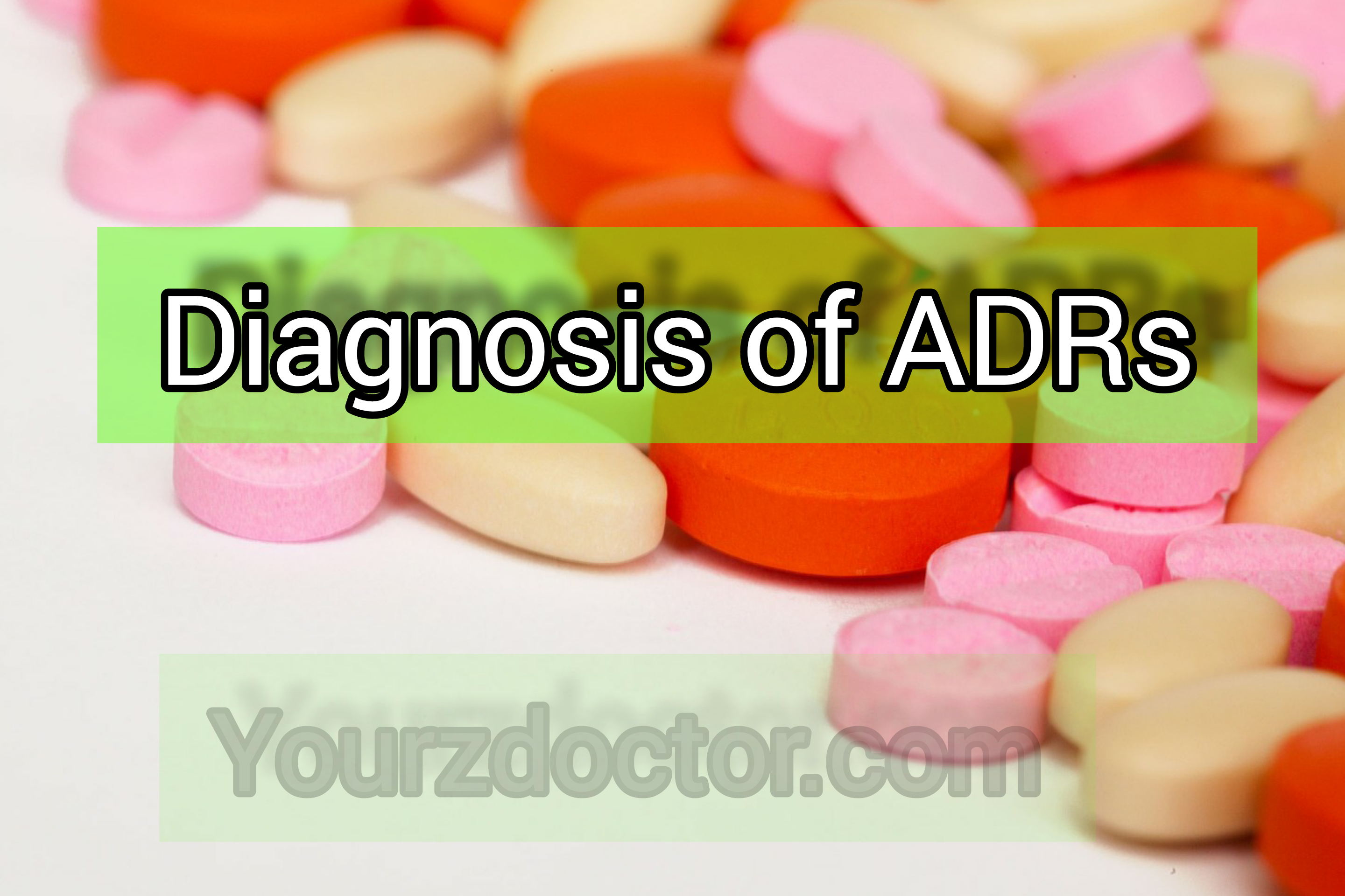Diagnosis of ADRs / causality assessment of ADRs / Detection of ADRs:
•it is the cause and effect
relationship between drugs and reactions. The signs and symptoms are quite
similar to the signs and symptoms of other diseases.
E.g. tachycardia, tachypnea, nausea are the side effects of
some drugs but also these signs may be due to CVS or GIT disorders so the
differtiation is quite difficult to detect. This detection is broader part of
diagnosis.
Take history:
If they are taking any drug the ADRs
might be due to this drug.
ADRs are caused by
•RX drugs
•OTC
•Herbs
•Prolonged use
Patient do not consider them drug.
E.g. OTC paracetamol chronic use increases
the chances of hypertension.
•Panadol CF is sympatho mimetic may
increase the blood pressure.
•Chronic use of aspirin cause the
increase in blood pressure.
Herbs causing ADRs:
•gingko biloba can cause haemorrhage
•if hypertension patient taking raw
garlic it can cause peptic ulcer.
•ephidra can causes tachycardia, insomnia and hypertension .
The above signs are associated with
the drug use but these signs may be very similar to other signs of diseases.
The process become quite difficult if multiple drugs are used together.
First thing is to take history next is
temporal relationship.* diagnosis of ADRs
Temporal relationship:
Time relationship between use of drugs
and occurrence of ADR. The cause must be precede effect. There should be plausible relationship
(logical relationship) between time and effect.
E.g. Paracetamol is taken just one
dose and liver failure happens . This liver failure is nit due to the
paracetamol because paracetamol cause hepatic toxicity only in dose >4000
mg/d
One day use of any drug , cancer is
caused this cancer is due to this drug is not possible the cancer cause is
something else.
Most drugs causes birth defects to the
fetous in 1st trimester because of organogenesis. In allergic ADRs
pre exposure is necessary.
Drugs which are dose dependent ADRs
usually occur after achieving steady state. Steady state are usually achieved
in 4-5 doses.
The signs and symptoms may abate or
disappear by decreasing the dose or withdraw the drug.* diagnosis of ADRs
Background frequency of an event:
How much common this event is and how
much this event is associated with the drug.
Suppose;
Nausea, vomiting, headache and fatigue is very common they may
not be associated with drug.
Uncommon conditions such as
angioedema, haemolytic anaemia, anaphylaxis and agranulocytes they may be
associated with drugs.* diagnosis of ADRs
Pattern recognition of ADRs:
In majority cases we know the
pharmacology of the drugs so they are easily practicable and easily determined.
E.g. amikacin causes ototoxicity this
is the known ADR of amikacin.
•PPIs cause severe diarrhoea this is
known ADR.
ADRs of new drugs are not well established.
Sometimes the patient is initially on drug 1 and the patient is ok but when
he/she start taking drug 2 ADRs happens. So this ADR is because of drug 2 or
drug drug interaction.
Withdraw the drug 2 look for signs and
symptoms if disappears gradually then this is drug drug interaction between
drug 1 and drug 2. If present then this is because of ADR of drug 2.
The dose frequency is reduced and the
therapy can be started again this is known as De challenge.
When we take digoxin with verapamil ,
verapamil increase the toxicity of digoxin .
How verapamil cause toxicity of
digoxin?
When digoxin enter into the cell efflux
pump like P-glycoprotein try to efflux digoxin out. Verapamil blocks this pump digoxin
inside the cell increases and digoxin toxicity happens.* diagnosis of ADRs
Lab investigations for ADRs:
•plasma drug concentration
•biopsy
•allergy test
They helps in establishing base line
function of various organs. Providing mean for observing that what happens if
the therapy is changed.
•for hepatotoxic drugs do LFTS
•for aminoglycosides do LFTS and evaluate urea.
Naranjo scale readings for ADRs:
Naranjo scale asses causality of ADRs.
Score -4 - +13
1-4 = possible ADRs
5-8 = probable ADRs
>9 = certain ADRs
<0 = doubtful ADRs
Learn more
Searching Tags
Detection of ADRs
Diagnosis of ADRs
Causality assessment of ADRs
Background frequency of event for ADRs
How digoxin toxicity is caused?
How verapamil cause digoxin toxicity?
Lab investigations for ADRs
What is naranjo scale?
How is
ADRs diagnosed?
How we
take history for diagnosis of ADRs?
Temporal
relation for ADRs
Pattern recognition of ADRs






0 Comments